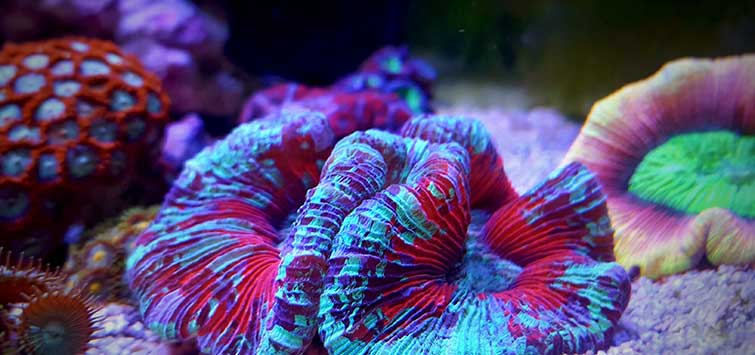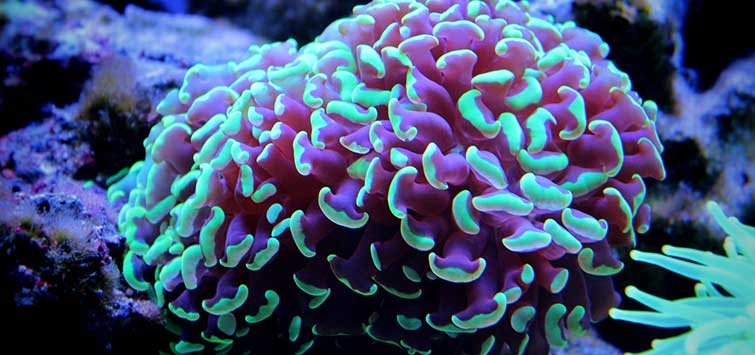Trachyphyllia geoffroyi
Author: Bob Goemans
Common Names: Open brain coral, folded brain coral, crater coral
Phylum: Cnidaria
Class: Anthozoa
Order: Scleractinia
Family: Trachyphyllidae
Range: Throughout the Tropical Indo-Pacific and Red Sea
Natural Environment: Initially, this photosynthetic stony coral with large fleshy polyps is attached while quite immature to hard substrates of various kinds. As it grows in weight and size, it breaks free and becomes a free-living coral. Adults are often found on muddy lagoo.
Captive Care
This hardy stony coral is common in the trade and easy to maintain in aquariums if placed in the correct location. This would be an area that receives gentle water flow and moderate light. Those that are red in color should be placed in shady areas or at least areas receiving indirect light. Green, tan, or brown varieties prefer slightly more light and should be placed in areas receiving low to moderate direct light.
It is extremely important not to place it where disturbed sand or debris will collect on its surface, as it requires much of the animal's energy to slough it off. It may become weakened if it has to continuously slough off sediment, and then it becomes susceptible to white-band disease or bleaching, and tissue recession soon follows.
Even though feeding tentacles are usually displayed at night, it will also sometimes display them if it senses food entering the aquarium during the daytime. When its feeding tentacles are displayed, I recommend directly dosing them with meaty foodstuffs, e.g., fortified brine shrimp, mysis, rotifers, and/or products containing cyclops. Feeding, in my opinion, should not occur more than once per week, as more seems to cause odd growth forms, sometimes leading to its demise.
It has been reported that in aquariums containing leather corals such as Sinularia species, Trachyphyllia species do not fair well, possibly because of the chemicals released by the Sinularia. Personally, those in my past aquariums alongside various sinularia species have not experienced that fate. But it's worth mentioning nevertheless.
Notes:
Never select a specimen that has any kind of algal growth on any of its exposed skeleton surface, as that will cause the tissue to recede, usually leading to the animal's demise sooner or later. Furthermore, this species is occasionally found tasty by some tangs and angelfish, so be forewarned. And do not remove a specimen with highly inflated tissue areas from the water, as the weight of the water in the polyp may damage or tear its flesh loose from its skeleton. Gently shake the specimen, allowing the flesh to retract somewhat, before removing from the water.
Water Requirements: Calcium 380 to 430 ppm, alkalinity 3.5 meq/l, pH 8.1 to 8.2, specific gravity 1.024 to 1.026, and a temperature range of 74° to 83°F (23° to 28°C).

.png?h=595&iar=0&w=2781&hash=5FD5E69473BCC22199FBFA2FB71B6033)



